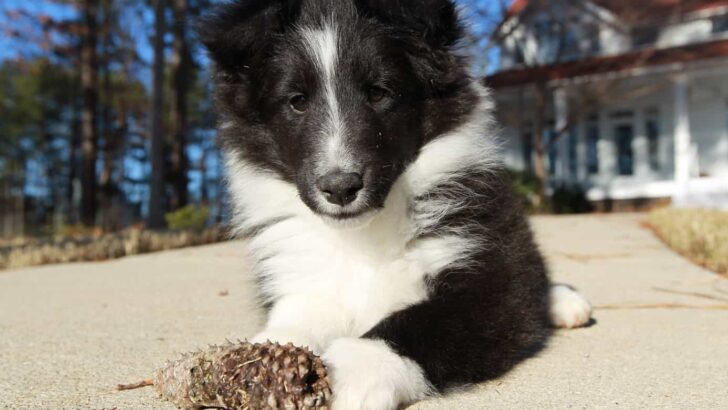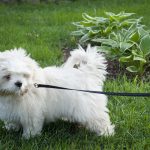- Nom Nom Dog Food Subscription Review - November 7, 2023
- 7 Best Dog Bed Ideas For Great Dane (DIY Options) - July 16, 2022
- Top 5 Rated Best Non-Prescription Diabetic Dog Food - July 15, 2022
Socializing a dog is a very important part of dog ownership. It’s one of those things that’s easy to overlook at first but will become a major problem if left unaddressed. You want your dog to be friendly with both other dogs and people. This is vital for your well being as well as your dog’s.
Dogs who aren’t properly socialized can exhibit aggression or fear when faced with new people and situations. You also probably want to take your dog places. This will go much smoother for you if you’ve taken the steps to socialize your dog along the way.
The good news is if you start early, it’s easy to cultivate a friendly dog who enjoys the company of both friends and strangers. If your dog is older or a rescue, you may have a slightly harder time. This goal is do-able, however, and we’re here to help!
Why Do You Need To Socialize Your Puppy?
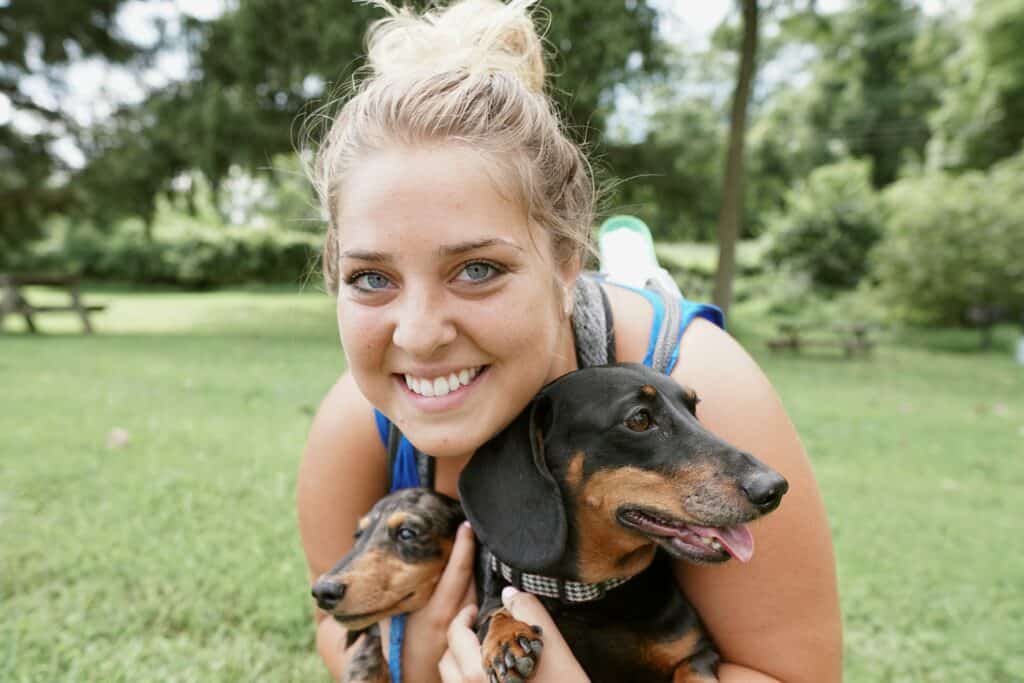
Socialization is important not just to give your puppy the best shot at a rich life. Socialization also helps ease difficult transitions and prevents emergencies from becoming more stressful.
If you fall ill or have to go away unexpectedly, it will be easier on your pet if he enjoys the comfort of other people. Holidays will be easier if your puppy is used to groups of people. Thunderstorms and fireworks can also be stressful for unsocialized dogs. If you work to ease these stressors ahead of time, your preventative acts will really improve life for both you and your dog.
I’m sure you can think of many situations like these. Therefore, time spent helping your dog adjust to new and potentially scary situations is well spent.
The Puppy Socialization Window
Puppy training is an intense time of endless instruction. You may feel like you’ve adopted a creature bent on destroying your life at moments. You can spend all your time focusing on keeping the new dog from going potty in the house and eating your end tables.
It’s easy to leave socializing off the to-do list since there are so many other things you’re teaching your puppy. This is not the easiest route, however. Take advantage of your puppy’s good nature and curious spirit and start socializing right off the bat.
Puppies go through a period of increased curiosity about the world around them between 4 and 14 weeks. This is prime time for socialization. In fact, it’s often called the puppy socialization window. Use this to your advantage and expose your puppy to new situations as often as you can. Just remember to be a calm, reassurance presence the whole time.
Some experts suggest daily novelty with lots of exposure to new pets, children, and new situations. Your puppy will learn something new with every interaction. Socialization isn’t only about interpersonal interactions. You are also habituating your puppy to the sights and sounds of life in a home.
How To Socialize Your Puppy
Puppy classes, doggy daycare, dog parks, and even the vet’s office are all great ways to work in some new experiences for your puppy. Your dog will meet other dogs in a structured environment in puppy classes, which is why this is a great place to start.
If your puppy is rambunctious, he’ll curiously seek out the other dogs and people in all the places you go together. Your role is to choose who your puppy meets with discernment. Stay present and moderate the interaction.
It’s best to avoid children who don’t have experience with animals at first. You don’t want to risk a negative interaction that sets the tone for your dog’s view of strangers. Dogs can be especially nervous with children at first because they move quickly and are unpredictable.
Let the little ones in your life know that your puppy is friendly but new to the world just like they are. Reinforce the idea that humans should be calm and loving with dogs and never pull their tail or yell loudly. This can scare the puppy.
Start with a few controlled interactions with older adults or children who understand how to treat animals compassionately. These positive interactions set up a positive association with new experiences for your dog. Later in your socialization, you can ask your dog to be calm near noisy children and even comfortable with their approach but start small.
Asking the children in your life to help you socialize your dog can actually be good for everyone. It’s a great opportunity to teach children to be kind and gentle. Many young ones are happy to help teach the new addition to the family.
Slowly expand your dog’s world by taking them to a pet friendly store or getting together with friends who also have a dog. Be sure to introduce your puppy to new things both at home and outside their comfort zone. Reinforce polite behavior on all of your outings so your puppy has a consistent perception of how to behave.
When your puppy is ready, a trip to the dog park can be a real test. Be vigilant and supervise your puppy. Feel free to ask other dog owners if it’s safe for your puppy to play with their dogs. Guide your puppy’s behavior by acting calm but interested in the other people and dogs at the park.
Socialization isn’t just about people, it’s also about situations. Take your dog for car rides, out for hikes, and to areas where there are lots of people. It’s also good to let your puppy stay overnight with a friend or take a weekend away and ask your friend to dog sit. This way, your puppy will grow used to the idea that you’ll always be back and they can play with cool new people without fear.
How To Socialize A Shy Puppy
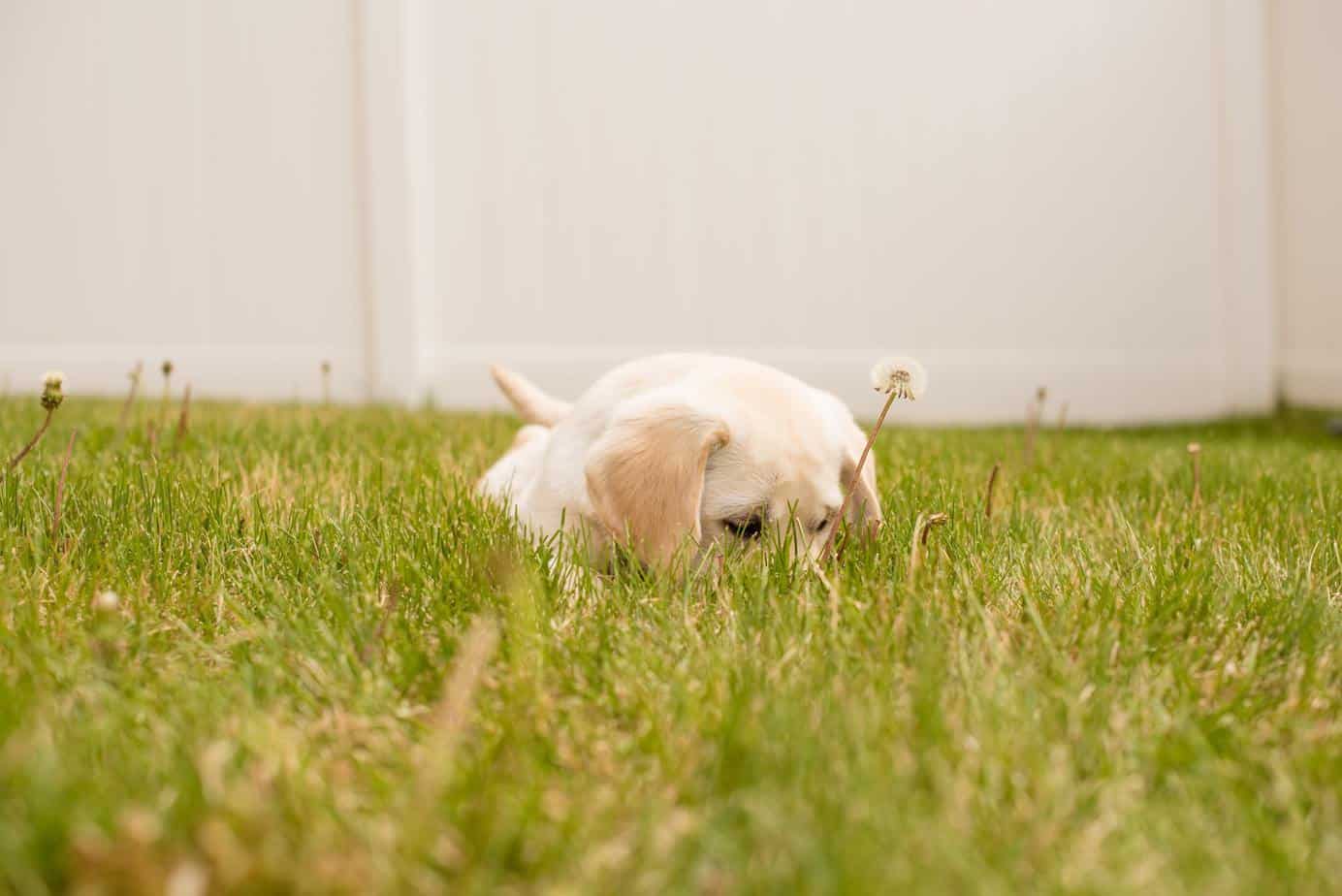
Shy puppies are more challenging. You’ll have to start very slowly. This may mean small steps like an adventure down the street from your house, or even in a room your puppy is skittish in. Bringing his favorite toy with you or a blanket he sleeps on at home can help bridge the gap between the comfort he knows and the new, exciting experience.
Gradually increase the level of noise in your house by playing the radio or television slightly louder than usual. How does your puppy react? Whenever your puppy takes a new experience in stride, give him a treat to let him know this is what you want from him.
When you start introducing new people to your shy puppy, arm them with treats. Ask them to speak softly and not force themselves on your dog. It’s good dog manners to let the puppy sniff you first before petting, anyway. The treats will grease the wheels.
If you do this often enough your puppy will assume new people have treats, which is a great way to get them feeling positively about strangers.
Think about your favorite activities. Would you like to bring your dog along? If so, start incorporating small pieces of these activities into your puppy’s life. If you love to hike, take a short walk in a field near a school. If you love having parties with the neighborhood kids, why not walk your dog near that same school around the time it lets out.
If you start slow and easy you can monitor your puppy’s reaction and back off if he seems nervous. Remember that it is always better to regress a step than push your dog before he is ready.
How To Socialize A Puppy With An Older Dog
Older dogs can be a big help to you when you’re socializing your puppy. Choose calm, friendly dogs to expose your puppy to. Try it out in your home and theirs. Encourage them to play but be happy if they just act relaxed around each other.
The older dog will teach your puppy good dog manners like how to greet and can even come along on adventures to help your puppy feel secure. Once they bond, the older dog will be a role model to your puppy and the effects are priceless.
Being friends with an older dog will teach your puppy how to play safely and help encourage them to see the world as an exciting place full of great things.
If you don’t already have an older dog in mind, take a trip to the dog park by yourself and screen some dog/owner pairs for the job. You can also join a doggy day care for the ultimate socialization and to meet other dogs for play dates.
Doggy Day Care For Socialization
Doggy day care sounds pretty ridiculous but it’s wonderful! Most facilities screen enrollees so the dogs who come there are likely to be friendly and good role models for your puppy. The puppy will come to see the employees as new humans they can trust and their classmates as friends.
The day care is neutral ground which also helps. You don’t have to worry about any territorial behavior for the most part. Some dogs will get territorial over objects or areas they like, but the employees are there to supervise. It’s a good idea to ask for a daily report or even lurk around and watch the first couple of days your dog goes to the day care.
There are usually some structured activities at doggy day care too, which help burn off energy and put dogs in a calm state.
Before you leave your dog at any facility, make sure the grounds are clean and there is enough space for the number of dogs there. Cramped, unsanitary conditions aren’t safe for your dog’s health or your goal of socializing them to be a productive member of dog society.
Ask how the day care treats puppies versus older dogs. Will they all be introduced to each other at once or can your puppy take it slow? Make sure the employees know all about your puppy’s personality and where you are in your training.
Dog Walkers
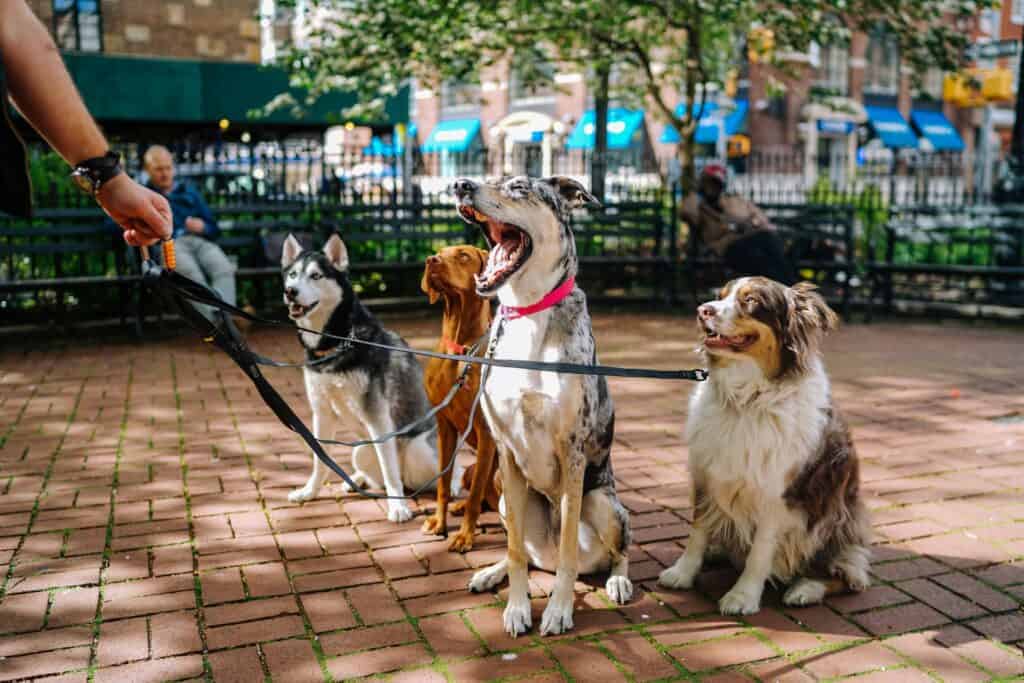
Dog walkers can also help socialize your puppy, even if it is just a kid from your neighborhood who loves dogs. The act of walking a dog strengthens the bond between human and pet. It’s great if your dog can learn to trust a responsible young person or a person at any age.
Dog walkers who walk multiple dogs at once, however, is more complicated. On the one hand, this can be incredible socialization experience for your puppy! On the other, it’s risky. Fights could break out. An unruly dog in the pack could cause a stir that frightens your puppy or places the group in danger. How hands on is the dog walker you’ve chosen?
If you’re comfortable with their level of expertise (it helps if they have some dog training experience if you want them to help you socialize your puppy), ask them to take your dog on a group walk with a small, select pack. This kind of experience can really help get your puppy ready for the first trip to the dog park.
Dog Parks
Dog parks aren’t 100% safe, just like life. They’re wonderful for dogs of all ages, provided everyone plays by the rules. Because we’re talking about small puppies, it’s a good idea to visit the park alone first. If you can get a recommendation from a friend who already goes to the park, that’s even better.
Get a feel for who shows up, how the dogs there behave, and ask if there are any problem fur kids that you should be on the look out for. Because dogs are often off leash at parks, it’s difficult to stop a fight from breaking out if someone acts out of turn.
These warnings aren’t to turn you off the idea, however. I just want you to be prepared and realize the dog park is a big step for your puppy. Do everything you can to minimize the risks so everyone involved has a great time.
The Vet
Making your rounds on a socialization trek with your puppy? Swing into the vet’s office just to say hi. It may sound crazy, but popping in once in a while can help a dog feel more comfortable at the vet’s. It also keeps him guessing about the purpose of the trip. Otherwise, dogs seem to know on the way to the vet that something bad is happening.
Ask your vet before you just drop by. Most will be happy to help you teach your dog to be calm and well behaved during a visit.
Sounds, Lights, And Smells
I once lived with a parrot who went a lot of places with me. We rode the bus together, we took walks, and we visited the local pizza place. Because variety was a part of her routine, she was able to come camping with us without any nervousness at all. She’d never been camping before, but she trusted us and saw new people and situations as fun.
I didn’t coddle her or keep her in a quiet, calm environment all of the time. This helped her be ready for anything. In fact, I called her my ‘rough and tumble’ bird. This is no different for our dogs.
If you can, simulate a thunderstorm, run the vacuum cleaner, pop some bubble wrap around your puppy. Go slowly and hand over a treat after a short period of noise. Your dog might be startled at first, but he will come to be curious about sounds instead of cowering in fear.
I highly recommend that you think about the usual suspects in terms of noises dogs dislike. Work them into your life slowly in a controlled way and reinforce your dog positively the whole time. If your dog seems terrified, however, stop the exercise. Some dogs are more sensitive than others and no amount of training will make them love thunder. You have to push gently and respond to the feedback your dog gives you.
You’re On Your Way To A Social Dog!
Let’s recap the important things we’ve learned.
Enlisting outside help, from either an older dog, a doggy day care, or friends and family is a great way to socialize your dog.
Always go slowly at first and be liberal with the treats!
A group training class is a great way to teach skills to and socialize a puppy.
Remember sights and sounds can be part of socialization, too.
Provide a secure environment for your puppy outside of socialization efforts. This will help your puppy adjust to new things without becoming anxious.
Most of all, have fun and be curious yourself. Continue to reassure your puppy in a loving way and encourage him to try new things with a sense of wonder. This way, you’ll get the full puppy experience and raise a happy well adjusted dog at the same time.
Continue reading:
How to Read a Dog’s Body Language
Does Your Pooch Have Small Dog Syndrome?
What You Need to Know About Slow Growth Feeding Plans for Dogs

